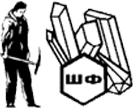Добрый день, Коллеги. Важное сообщение, просьба принять участие. Музей Ферсмана ищет помощь для реставрационных работ в помещении. Подробности по ссылке
Mineral resources, economics and the environment / Минеральные ресурсы, экономика и окружающая среда
We are facing a global mineral resource crisis. In fact, we have two of them. First, Earth has a finite supply of minerals for a population that is growing faster than at any time in history
(Figure 1.1). Second, mineral consumption is growing even faster than the population. Until recently, we were deeply concerned that most minerals were used in more developed countries (MDCs) with smaller consumption in less developed countries (LDCs) (Table 1.1). Although MDCs account for only 13% of world population, they consume 40% of world oil, 34% of world copper, 28% of world aluminum, 23% of world coal, and 21% of world steel, far more than their share. Now, the MDCs have been joined by China, which alone consumes 49% of world coal, 46% of world steel, 43% of world aluminum, 34% of world copper, and 11% of world oil, also far above its 20% share of world population. Demand is also increasing from India and other large LDCs as global affluence grows.
This creates a dilemma. Although we need more minerals to supply civilization, we are becoming increasingly aware that their production and use are polluting the planet. Effects that were once local in scale have become truly global, with mineral consumption implicated strongly in problems ranging from global warming and acid rain to destruction of the ozone layer and pollution of groundwater. Just when we need to expand mineral production, there is concern that Earth is reaching its limit of mineral-related pollution. We cannot ignore this crisis. Our civilization is based on mineral resources. Most of the equipment that supports a modern life style is made of metals and powered by energy from fossil fuels. The machines that we have developed to transition us into a renewable energy future are also made entirely of mined materials. Our dependence on minerals pervades society and managing their flow is a major challenge to society (Figure 1.2). Large-scale production of food for growing populations depends on mineral fertilizers, the buildings in which we live and work are made almost entirely of mineral material, and even the gems and gold that we use for adornment and to support global trade come from minerals. Although some might seek a return to Walden Pond to free them from mineral dependency, most of Earth’s 7 billion inhabitants are actively seeking the comforts that mineral consumption can provide. If global population and affluence continue to grow as rapidly as many estimates suggest, the pressure to find and produce minerals will be enormous. <...>




